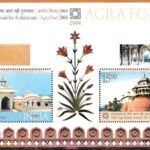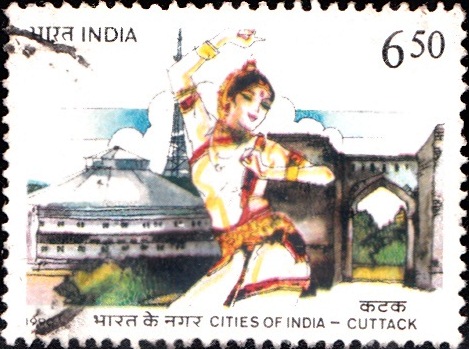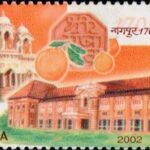
Historical Gates of Indian Forts and Monuments
A Miniature Sheet consisting of 8 nos. of postage stamp on the Historical Gateway and Big Gates in India : Buland Darwaza, Kote Gate, Jorawar Singh Gate, Sardar Market Gate, Kashmere Gate, Rumi Darwaza, Magazine Gate and Delhi Gate :










 Issued by India
Issued by India
Issued on Oct 19, 2019
Issued for : Department of Posts is pleased to release a set of eight Commemorative Postage Stamps on Historical Gates of Indian Forts and Monuments.
Credits :
Stamps/Miniature Sheet/FDC/Brochure/Cancellation Cachet : Shri Brahm Prakash
Type : Miniature Sheet, Mint Condition
Colour : Multi Colour
Denomination : 500 Paise (6) and 1000 Paise (2)
Stamps Printed : 5.0 Lakh each
Miniature Sheet Printed : 1.1 Lakh
Printing Process : Wet Offset
Printer : Security Printing Press, Hyderabad
About :
- The magnificent forts and monuments built during the Mughal times either by the Mughal rulers or the Indian Princely Royals, had mammoth entry or exit gates to their main city area. These gates not only served as controlled movement points for the common people but also the military troops during times of war. Most of these gates were later reconstructed and reinforced by the British. Standing in most cases as dividers between the old and the new city, these gates are a reminder of India’s glorious past.
- BULAND DARWAZA, FATEHPUR SIKRI
- Buland Darwaza or the “Gate of victory”, was built in 1601 A.D. by Mughal emperor Akbar to commemorate his victory over Gujarat. It is the main entrance to the Jama Masjid at Fatehpur Sikri, which is 43 km from Agra. It is a typical example of Mughal architecture, made of red and buff sandstone, decorated by white and black marble and is higher than the courtyard of the mosque. On the outside a long flight of steps sweeps down the hill giving the gateway additional height. The total height of the structure is about 54 metres from the ground level. An inscription on the central face of the Buland Darwaza throws light on Akbar’s religious tolerance and broad mindedness. The Buland Darwaza is semi-octagonal in plan and is topped by pillars and chhatris, echoing early Mughal design with simple ornamentation, carved verses from the Koran and towering arches.
- KOTE GATE, BIKANER
- During the medieval period, Bikaner city was also covered by a protecting wall, like other king ruled cities of Rajasthan. Kote gate is the heritage entrance gate to the old Bikaner city. Credit to its solid architecture, that even after 500 years and heavy modern day traffic everyday, Kote gate stands tall with the same royal pride. Built during the reign of King Ganga Singh, the word Kote gate is taken from word ‘Parkota’ meaning wall of city for its protection. Now it is a busy junction with the main shopping area of the city of Bikaner all around it. Kote Gate is a famous tourist attraction in the city. It overlooks the famous shopping markets. It is the entry point between the old city of Bikaner and the new city overlooking the attractive havelis, which are huge mansions with intricate architecture.
- JORAWAR SINGH GATE, JAIPUR
- Jaipur was founded in the 16th Century by Maharaja Sawai Jai Singh II. He did everything to make it a spectacle for the entire world and to keep it safe from intruders. A prominent part of city’s history are the ‘Gates of Jaipur’, the original entrance into the walled city. Commonly known as the Zorawar Singh Gate, Dhruv Pol is the northernmost gate of the walled city. It is named after the Pole Star or the Dhruv Tara, a star that marks the North direction. It is also the widest of all the gates. Jorawar Singh Gate in Jaipur leads to Amber fort. Named after a general, this gate is the entryway to the northern area of the city and acts as a beautiful introduction to a walk around this part of town.
- SARDAR MARKET GATE, JODHPUR
- Sardar Market of Jodhpur is one of the popular landmarks along with Ghanta Ghar or Clock Tower. There is a big gate with name of the market called Sardar Market gate. It is a symbol of typical Rajasthani architecture fused with Mughal architecture, with balconettes, arches and floral designs. The façade of each unit is characterised by jharokhas and openings on all sides of the gate. Made of red sandstone and white marble, this gate divides the new city from the old.
- KASHMERE GATE, DELHI
- Kashmere Gate is the famous northern gate to the historic walled city of Delhi. Built by the Mughal Emperor Shah Jahan, it leads to the Lal Quila, the Red Fort of Delhi. The gate faces towards Kashmir, so it was named Kashmere Gate under the British Raj. During the First War of Independence of 1857, the British had used the gate to prevent the rebels from entering the city. The left leaf of the Gate was destroyed using gunpowder, starting the final assault on the rebels towards the end of Siege of Delhi. After 1857, the British moved to Civil Lines and Kashmere Gate became the fashionable and commercial centre of Delhi, a status it lost only after the creation of New Delhi in 1931. In 1965, a section of the Kashmere Gate was demolished to allow faster movement of vehicular traffic. Since then, it has become a protected monument of the Archaeological Survey of India.
- RUMI DARWAZA, LUCKNOW
- The Rumi Darwaza sometimes known as the Turkish Gate, is an imposing gateway which was built under the patronage of Nawab Asaf–Ud–daula in 1784. It is an example of Awadhi architecture. The Rumi Darwaza, which stands 60 feet tall, was modelled after the Sublime Porte (Bab-i Hümayuo) in Istanbul. It is adjacent to the Asafi Imambara in Lucknow and has become a logo for the city of Lucknow. It used to mark the entrance to Old Lucknow City, but as the City of Nawabs grew and expanded, it was later used as an entrance to a palace which was later demolished.
- MAGAZINE GATE, AJMER
- Magazine Gate is the main gate leading to the magazine building also known as Akbar’s Palace that was built by Akbar in A.D. 1570. Akbar used to stay here during his visit to Dargah of Khwaza Saheb. Later on, it was taken over by the British from Marathas in A.D. 1818 and was used as arsenal ground. Thereafter, this building was known as Magazine Building. This palatial building was also used as embassy building of Sir Thomas Roe, who presented his credentials to Jahangir on tenth January, A.D. 1616. In the year A.D. 1908, it was converted into Rajputana Museum. This gate is made of sandstone and is symbolic of the grand Mughal architecture.
- DELHI GATE, DELHI
- Delhi Gate is the southern gate of the historic walled city of Old Delhi, or Shahjahanabad. The gate links the New Delhi city with the old walled city of Delhi. The Gate was built by Emperor Shah Jahan in 1638. The emperor used this gate to go to the Jama Masjid for prayer. The gate is similar in design and architecture to the northern gate of the walled city, the Kashmere Gate. It was built in sandstone and is an impressive and large structure. Near the gate entry, two stone carvings of elephants were erected. The road from this gate passes through Daryaganj leading to the Kashmere Gate. A part of the fort wall to the east has been demolished to build the Old Delhi Railway Station while the wall to the west exists.
- Text : Shri Pallab Bose








[…] small building in Kinari Bazar, Chandni Chowk. In 1902, the College shifted to its own building at Kashmere Gate which was donated by Rai Bahadur Lala Sultan Singh. The College moved to its present campus in […]